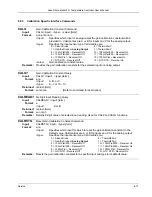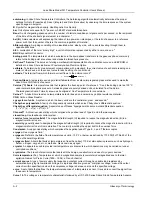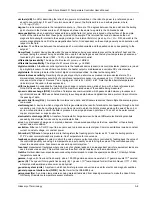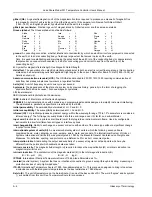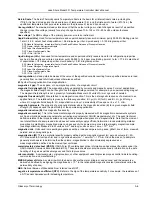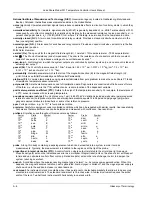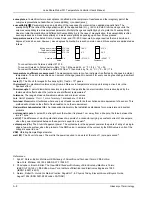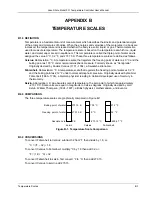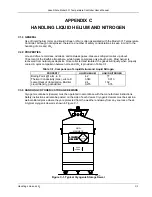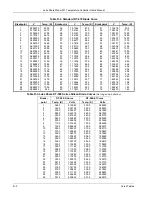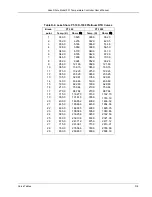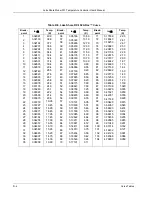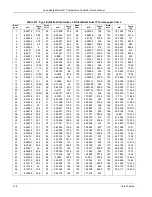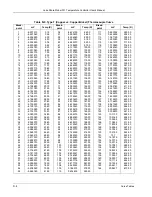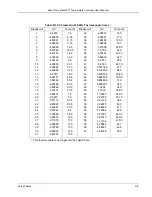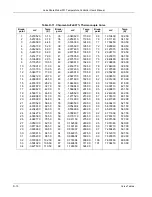
Lake Shore Model 331 Temperature Controller User’s Manual
C-2
Handling LHe and LN
2
C4.0 LIQUID HELIUM AND NITROGEN SAFETY PRECAUTIONS
Transferring LHe and LN
2
and operation of the storage dewar controls should be in accordance with the
manufacturer/supplier’s instructions. During this transfer, it is important that all safety precautions
written on the storage dewar and recommended by the manufacturer be followed.
WARNING:
Liquid helium and liquid nitrogen are potential asphyxiants and can cause rapid suffocation
without warning. Store and use in area with adequate ventilation. DO NOT vent container in
confined spaces. DO NOT enter confined spaces where gas may be present unless area
has been well ventilated. If inhaled, remove to fresh air. If not breathing, give artificial
respiration. If breathing is difficult, give oxygen. Get medical help.
WARNING:
Liquid helium and liquid nitrogen can cause severe frostbite to the eyes or skin. DO NOT
touch frosted pipes or valves. In case of frostbite, consult a physician at once. If a physician
is not readily available, warm the affected areas with water that is near body temperature.
The two most important safety aspects to consider when handling LHe and LN
2
are adequate
ventilation and eye and skin protection. Although helium and nitrogen gases are non-toxic, they are
dangerous in that they replace the air in a normal breathing atmosphere. Liquid products are of an even
greater threat since a small amount of liquid evaporates to create a large amount of gas. Therefore, it is
imperative that cryogenic dewars be stored and the MTD System be operated in open and well
ventilated areas.
Persons transferring LHe and LN
2
should make every effort to protect eyes and skin from accidental
contact with liquid or the cold gas issuing from it. Protect your eyes with full face shield or chemical
splash goggles. Safety glasses (even with side shields) are not adequate. Always wear special
cryogenic gloves (Tempshield Cryo-Gloves
®
or equivalent) when handling anything that is, or may have
been, in contact with the liquid or cold gas, or with cold pipes or equipment. Long sleeve shirts and
cuffless trousers that are of sufficient length to prevent liquid from entering the shoes are
recommended.
C5.0 RECOMMENDED FIRST AID
Every site that stores and uses LHe and LN
2
should have an appropriate Material Safety Data Sheet
(MSDS) present. The MSDS may be obtained from the manufacturer/distributor. The MSDS will specify
the symptoms of overexposure and the first aid to be used. A typical summary of these instructions is
provided as follows.
If symptoms of asphyxia such as headache, drowsiness, dizziness, excitation, excess salivation,
vomiting, or unconsciousness are observed, remove the victim to fresh air. If breathing is difficult, give
oxygen. If breathing has stopped, give artificial respiration. Call a physician immediately.
If exposure to cryogenic liquids or cold gases occurs, restore tissue to normal body temperature
(98.6°F) as rapidly as possible, then protect the injured tissue from further damage and infection. Call a
physician immediately. Rapid warming of the affected parts is best achieved by bathing it in warm
water. The water temperature should not exceed 105 °F (40 °C), and under no circumstances should
the frozen part be rubbed, either before or after rewarming. If the eyes are involved, flush them
thoroughly with warm water for at least 15 minutes. In case of massive exposure, remove clothing while
showering with warm water. The patient should not drink alcohol or smoke. Keep warm and rest. Call a
physician immediately.


